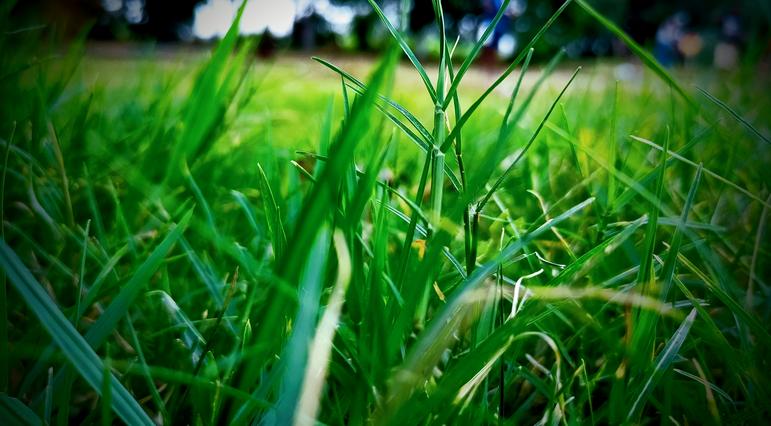Fall Lawn Care Guide Part 2: Why Cool Temperatures Bring the Best Time for Seeding

Welcome Fall, and welcome to the best lawn-care season of the year!
In the Washington, DC area—and much of the Mid-Atlantic—September is the prime month for lawn seeding, core aeration, and soil improvement, but October is still an excellent time. With cooler nights, warm soil, and drier weather, fall gives us a 2-3 month window of nearly perfect conditions to build stronger, greener lawns.
What Time of Year is Best to Seed My Lawn?
Grass seed needs warmth to germinate, but roots grow best in cooler weather. In September and October in the DC Metro area, soil temperatures are still high enough to trigger seed germination—particularly for tall fescue, which requires nighttime lows above 45°F.
Here’s the natural advantage:
-
Warm fall days grow the tops.
-
Cool winter months grow the roots.
Think of it like a slow-cooking stew—nature uses the cold season to build deep, resilient root systems that will fuel a thick, healthy lawn next spring. Here, you will find a step-by-step guide for seeding this fall to take advantage of these temperatures.
Step 1: Kill Weeds Before Seeding
Before seeding, eliminate weeds that compete for space, water, and nutrients. We cover this in part 1, all about treating fall weeds. To recap:
-
DIY Weed Control Mix: Combine 4 oz of Image All-in-One with 1 oz of Wilt-Pruf in a gallon of water. This powerful mix wipes out nearly all weeds, even stubborn ones like creeping spurge.
-
Thanks to the Wilt-Pruf, you can seed immediately after treatment. Bonus: dying weeds serve as a natural straw cover for your grass seed.
If you’re unsure about weed identification, bring a bagged sample (with a damp paper towel) to us for expert help and identification.
Step 2: Build Better Soil
Healthy soil equals healthy grass. Superior soils like McGill’s Soil Builder or Coast of Maine’s Black Earth dramatically improve seed germination and long-term lawn health. Applying this soil is a practice referred to as "Top Dressing", and you will need to spread ⅓”–½” across the whole lawn, or target bare spots for repair. You can additionally search for products called "seed accelerators", which reduce watering needs by 50% during the seeding process. We recommend Greenview’s Grass Seed Accelerator. Its moisture-holding crystals expand like popcorn, attracting and storing water right where seeds need it most. Another boosting product to consider is Kick Start: Adding this humate to your watering can boost germination speed by up to 50%.
Step 3: Fertilize When You Seed
Just like newborns need food and care, new grass seed needs fertilizer at planting. Rather than dated "seed and sod starter" formulas, we recommend Turf Trust Fertilizer. It offers slow-release nitrogen, sulfate of potash (not the harsher muriate of potash), and other trace nutrients like iron for faster seed germination and greener results.
Core Aeration vs. Dethatching: What’s Best for Fall?
Forget dethatching—modern tall fescue lawns don’t need it. Unlike bluegrass, fescue develops little to no thatch. However, core aeration is the key. Make 3 passes with an aerator to relieve compaction, improve oxygen flow, and create ideal seed-to-soil contact. After aeration, cover holes with black soil, apply Grass Seed Accelerator, and water in the evenings to avoid morning evaporation.
How Should I seed in Shady Areas?
Shady lawns fail for three main reasons: soil, seed, and sunlight.
-
Soil in shade is weak. Microbial activity is lower, so soil becomes compacted and lifeless. Amend with McGill’s Soil Builder or Coast of Maine’s Black Earth.
-
Wrong seed choice. Tall fescue is a sun grass. For shade, plant mixes containing:
-
Chewings fescue
-
Creeping red fescue
-
Hard fescue
-
Perennial ryegrass
-
Some bluegrass
-
-
Too little sun. Be realistic about your shade:
-
1 hour of sun (11am–5pm) = dense shade
-
2 hours = medium shade
-
Less than 1 hour = full shade (grass won’t thrive—use ground covers instead).
-
For extreme amounts of shade, we recommend limbing up trees, removing poor-quality trees, or planting shade-loving ground covers like pachysandra, periwinkle, or dwarf mondo grass.
Common Weed Alert: Creeping Spurge
This flat, small-leaf weed thrives in late summer with an incredibly fast 3-day germination cycle. It can take over quickly if ignored. We find the best way to control it is with products Fertilome’s Weed Free Zone or Image All-in-One. And remember, always ID weeds correctly before treatment for best results.
Fall Lawn Care Pro Tips
-
Water wisely: Seedlings need more water than most people think. Watering after 5pm will minimize evaporation.
-
Use rain gauges: Don’t guess—measure.
-
Don’t dethatch: Core aeration is enough.
Final Thoughts: Why Now is the Time
Fall seeding is the single most effective way to build a healthy, resilient lawn in the DC area. With the right weed control, soil building, seed choice, and fertilization, you can take advantage of the best 60-day window nature gives us all year.
If you want expert guidance, visit Betty's for lawn calendars, weed treatment charts, and product recommendations. And remember—investing in quality seed and soil now saves money (and headaches) later.
-
12507 Route 29, VA 22030